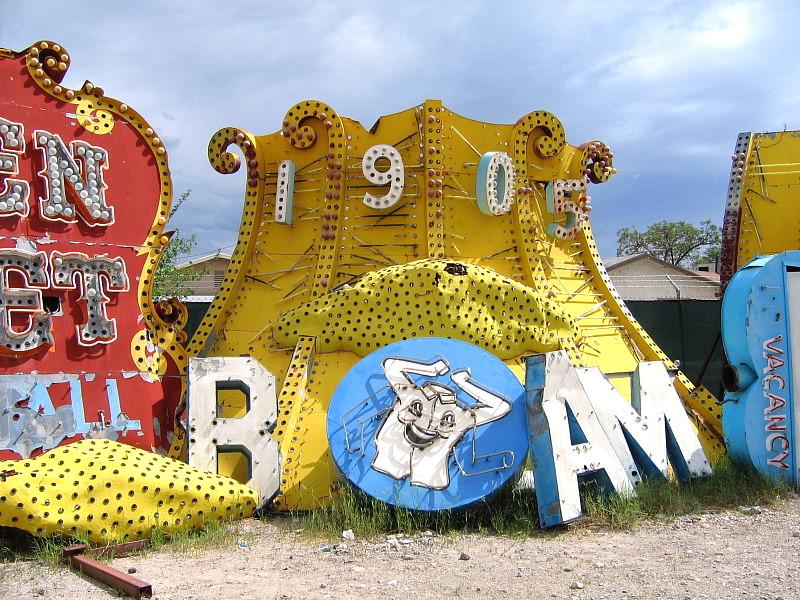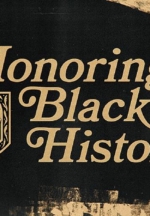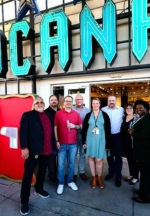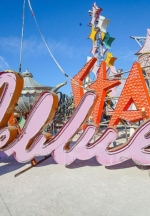
The Neon Museum is the perfect place to celebrate International Women’s Day on Monday, March 8, and Women’s History Month this March as several of its iconic neon signs relate the interesting and longstanding role women have played in the history of Las Vegas, including:
The Golden Nugget “1905” sign honors the historic founding of Las Vegas, which was made possible when Helen J. Stewart sold her ranch in 1902 to Senator William A. Clark, acting on behalf of the San Pedro, Los Angeles and Salt Lake Railroad. Stewart began operating the ranch, located just north of The Neon Museum and now home to the Mormon Fort State Park, after her husband, Archibald, was killed in a gunfight in 1884. The ranch was a popular spot, with shady cottonwood groves, a creek and vines, which produced 600 gallons of wine annually. Mrs. Stewart went on to become Las Vegas’ first postmaster (1893), first woman elected to the school board (1915) and first woman to serve on a jury (1916).
The Moulin Rouge sign was designed byBetty Willis, who was a pioneer woman sign designer in an era when there were few, if any, others. Willis also designed the iconic “Welcome to Fabulous Las Vegas” sign. Sarann Knight-Preddy, the first African American woman to receive a gaming license in Nevada, owned the Moulin Rouge for many years and was hoping to restore it to its former glory. However, the property never again realized the success it had enjoyed in its heyday. The Moulin Rouge sign was reassembled and re-illuminated last year to its original layout in the Neon Boneyard.
The Binion’s Horseshoe sign is from the famous family-led business and one of the six restored Neon Museum signs found on Las Vegas Boulevard between Sahara and Washington, a designated National Scenic Byway. Benny Binion’s wife Teddy Jane Binion was an essential participant in the running of the Horseshoe. While Benny Binion was in jail for tax evasion, the family ran the hotel in his absence and continued to actively run the property after he was released from jail. Teddy Jane was the bookkeeper for Binion’s Horseshoe and managed the casino cage until her death in 1994.
The Green Shack sign dates to the 1930’s when Mrs. Mattie Jones moved her fried chicken and bootleg whiskey business from her home kitchen to a green railroad barracks building on East Fremont Street/Boulder Highway. The Green Shack became one of the first stand-alone restaurants outside of downtown Las Vegas and one of the longest running restaurants in the Las Vegas valley. Her nephew, Frank McCormick, and later his son, Jim McCormick, took over the restaurant, which remained a Las Vegas institution, famous for its fried chicken and a meeting place for old-timers, until it closed in the 1990s.



















